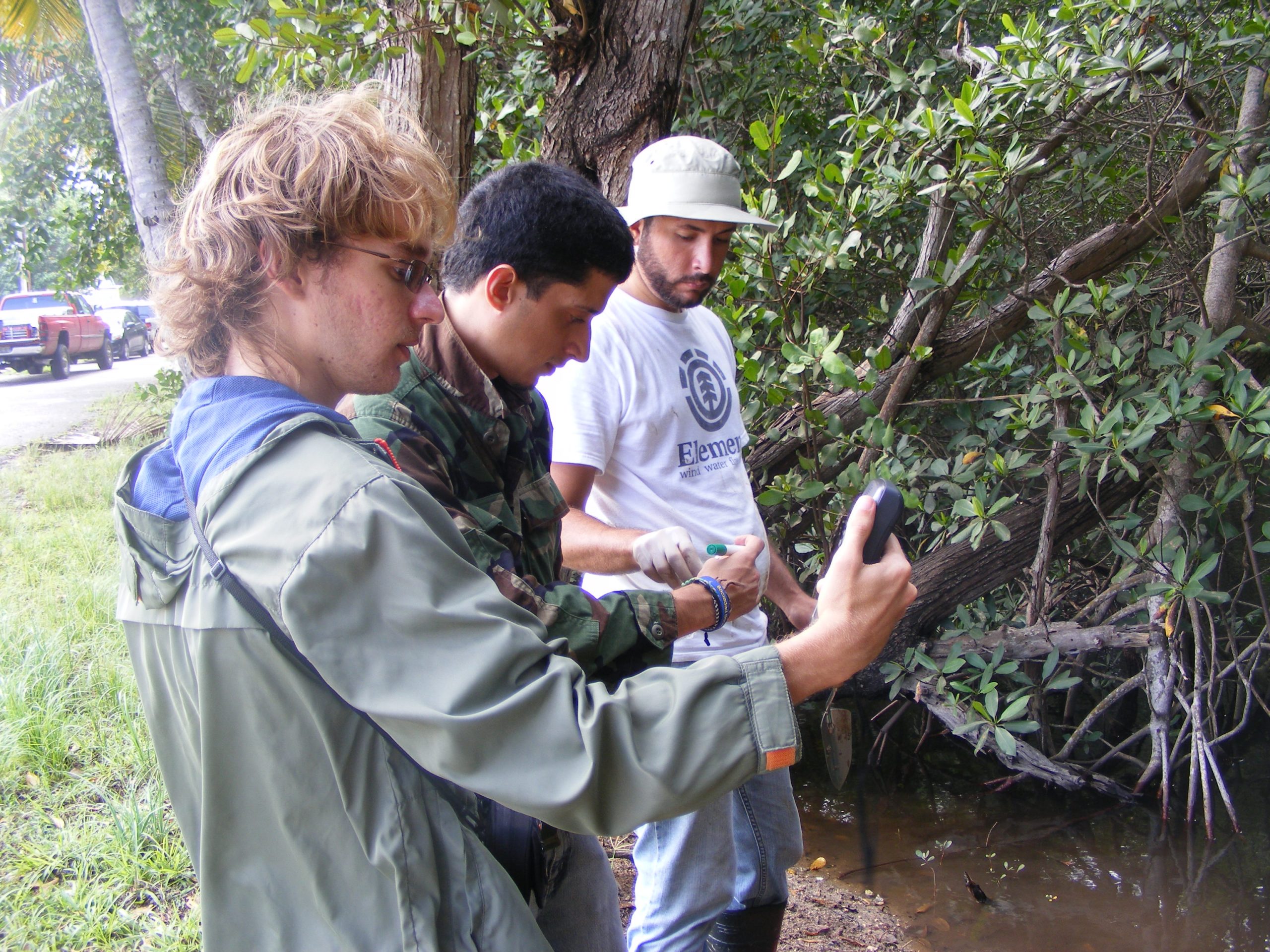Spaceborne and airborne remote sensing allows a synoptic view of large areas of the Earth’s surface in a cost effective way. It has been successfully applied to mineral exploration, where metals in the substrate affect the spectral response of the vegetation growing on chemical anomalies. In order to test this technique in Puerto Rico, Johannes Schellekens and Fernando Gilbes are conducting a study supported by UPR-Sea Grant College that aims to investigate whether the changes in pigment synthesis can be used to discern metal contamination in mangrove wetlands. As part of a second phase of this project the undergraduate students Habib Bravo, Gabriel Mattei, and Kevián A. Pérez recently conducted two field samplings. The first occurred during February 5 of 2010 in Guánica, southwest of Puerto Rico, a pristine area with low amount of metals. This study site is far away from the coast; therefore a special arrangement was done with Dr. Roy Armstrong, professor in Marine Sciences Department, for going in his boat (R/V Boriken). Fernando Gilbes also participated in this sampling for training students in field work techniques. They collected samples of sediments and leaves from mangroves in Cayo Aurora, also known as Gilligan Island. The second sampling took place on February 27 of 2010 in Arecibo, north of Puerto Rico, a large contaminated area with metals. The selected site was barrio Islote, sector El Vigia, towards the lighthouse (at the surroundings of Club Nautico of Arecibo). In addition to samples of sediments and leaves, reflectance measurements of mangrove leaves were taken in Guánica and Arecibo with the GER 1500 spectroradiometer. All the data are now being processed in the laboratory.

Category: Research






